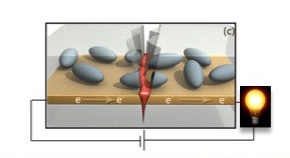US academics develop self-healing circuits

Academics have developed a technique that lets circuits heal themselves in the case of fatal overheating.
The method was explained in the Autonomic Restoration of Electrical Conductivity paper (PDF), published on Tuesday in the Advanced Materials journal. It means people could develop circuits that can fix themselves after a catastrophic failure.
"Thermomechanical failure of conductive pathways in highly integrated circuits results in loss of function that is often impossible to repair and remains a long-standing problem hindering advanced electronic packaging," the University of Illinois scientists wrote in the paper. "Here, we demonstrate autonomic healing of an electrical circuit with nearly full recovery of conductance (ca. 99 percent) less than one millisecond after damage."
When a circuit undergoes thermomechanical failure, cracks form that break conductivity. The technique uses capsules of liquid metal that dissolve when this happens, restoring conductivity.

By either covering the circuit's dielectric layer in 200 micrometre-wide — 200,000 nanometre — microcapsules of liquid gallium-indium (Ga-In) alloy, or by embedding 10 micrometre-wide — 10,000nm — Ga-In microcapsules in the gold circuit lines, scientists were able to bring dead circuits back to life in as little as 20 microseconds.
Scientists found that in the case of overheating the 200 micrometre capsules would dissolve, fill in the cracks and heal 90 percent of tested circuits, while the 10 micrometres ones worked even better, healing 99 percent of circuits.
The technique has relevance for new circuits in the fields of microelectronics, advanced batteries and general electrical systems; it could even lead to new chips with greater redundancy and the ability to form ad-hoc circuits in the case of unusual overheating, the scientists said.
However the scale on which the experiment works is a far cry from the microscopic scales of cutting-edge chips: Intel is preparing to fabricate chips with transistor gates made to a 22nm — 0.02 micrometre — process.